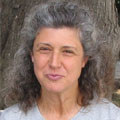 Avian Island in Video
Avian Island in Video
To accompany our current featured story on Avian Island, we have uploaded a video taken by our scientists on the island. This one minute thirty… {Read More »}

 Maria Vernet is a marine scientist from Scripps Institution of Oceanography at the University of California, San Diego. She has participated in various studies involving phytoplankton ecology and physiology including the effects of ultraviolet radiation on photosynthesis to the grazing by Antarctic krill on coastal phytoplankton. During
Maria Vernet is a marine scientist from Scripps Institution of Oceanography at the University of California, San Diego. She has participated in various studies involving phytoplankton ecology and physiology including the effects of ultraviolet radiation on photosynthesis to the grazing by Antarctic krill on coastal phytoplankton. During 







